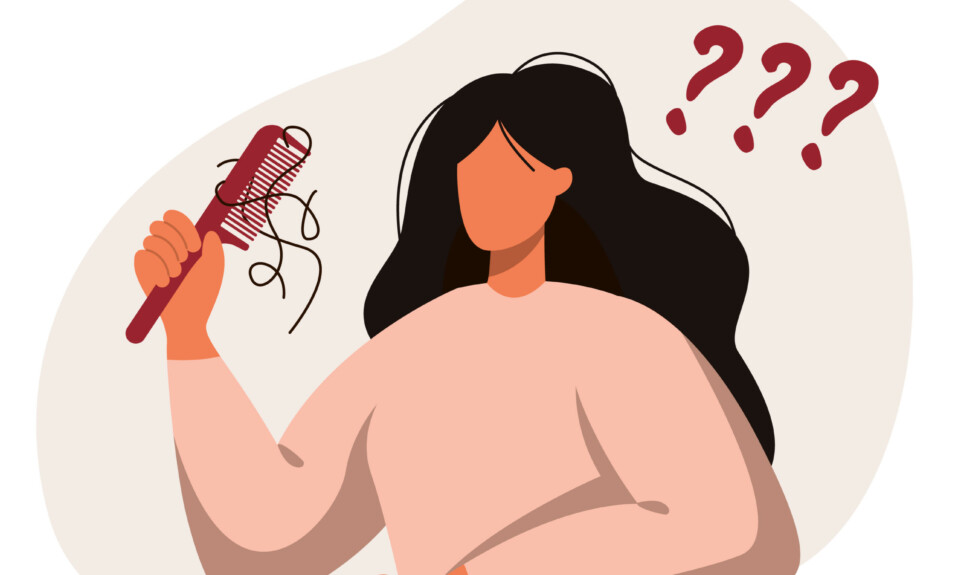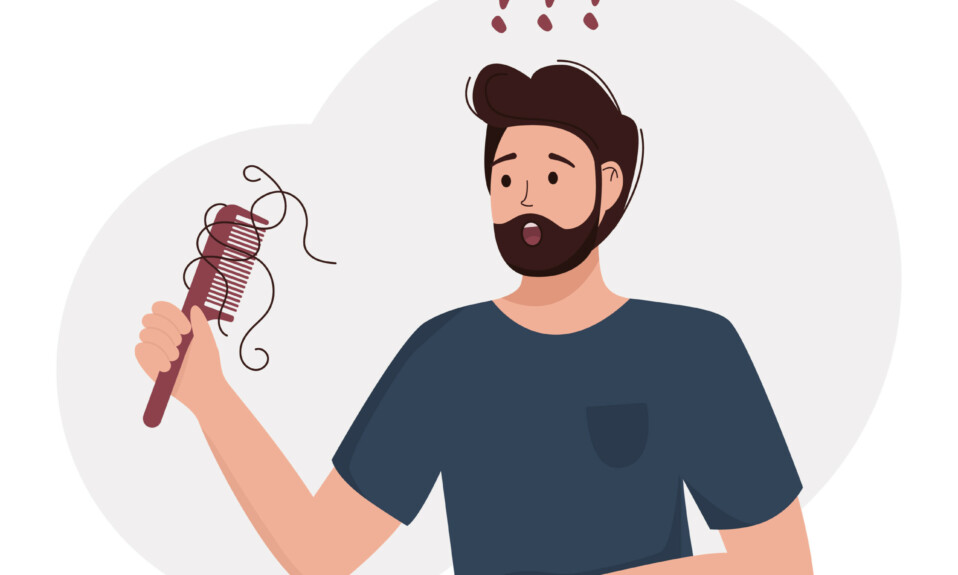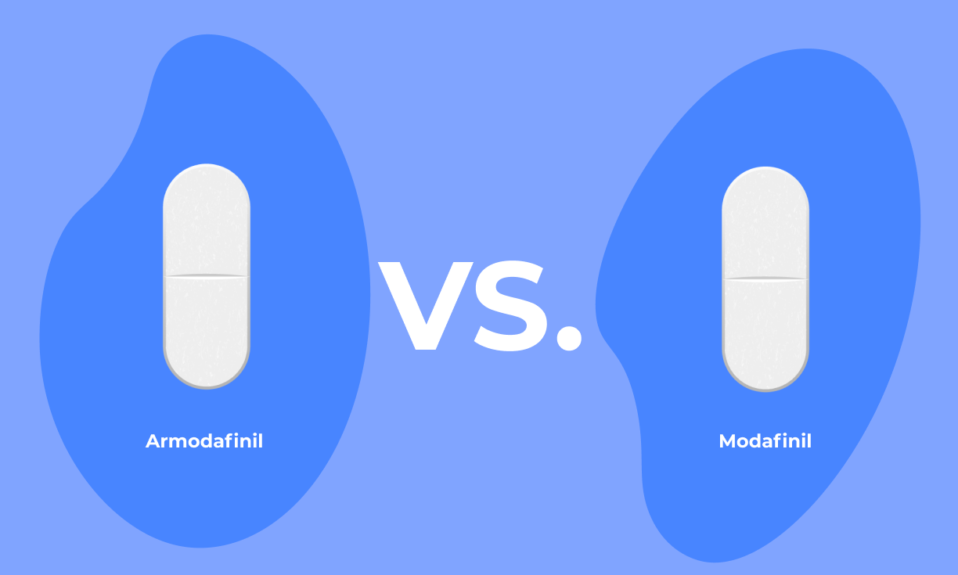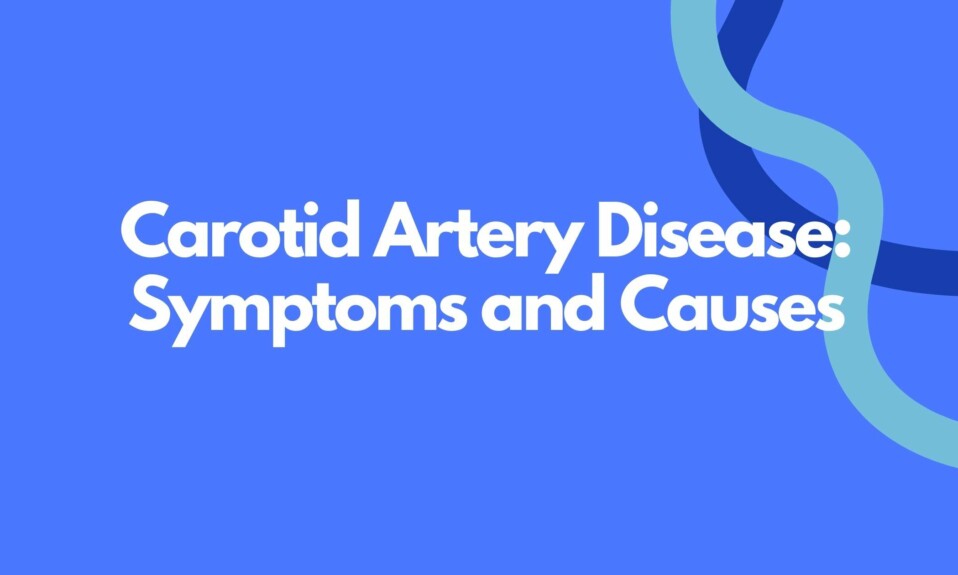Table of Contents Hide
- Introduction
- Telogen Effluvium
- What is Postpartum Hair Loss?
- What Causes Postpartum Hair Loss?
- Which Scalp Regions are Involved in Postpartum Hair Loss?
- What is the Duration of Postpartum Hair Loss?
- Hair Loss and Oral Contraceptives
- How is Postpartum Hair Loss Diagnosed?
- How to Combat Postpartum Hair Loss?
- Conclusions
- FAQs
- Does postpartum hair loss occur in all pregnancies?
- Does pregnancy cause permanent hair loss?
- How long does it take for postpartum hair loss to grow back?
- How can I prevent hair loss after pregnancy?
- Is postpartum hair loss related to breastfeeding?
- What vitamins should I take for hair loss after pregnancy?
- How much hair do you lose postpartum?
- References
Introduction
You just gave birth to a child. Now, you are experiencing significant hair fall and you’re starting to get anxious. Worry not. Postpartum hair loss after pregnancy is quite common. More than 50% of all new moms experience postpartum hair loss. In fact, it is not even considered true hair loss as it is only temporary. Dermatologists refer to postpartum hair loss as excessive hair shedding.
Postpartum hair loss typically doesn’t happen immediately after your baby is born. In most women, hair loss occurs between 8 and 16 weeks after delivery. The duration and severity of hair loss vary from woman to woman. While hair loss can persist for up to 18 months, most people find their hair bounces back much sooner.
The following article discusses the underlying mechanisms, causes, relevant scalp areas, duration, and treatment of postpartum hair loss.
Telogen Effluvium
Before we dive into postpartum hair loss discussion, it is important to understand the hair growth and loss cycle.
Telogen effluvium, meaning loss of hair in the resting phase, is among many types of reversible non-scarring hair loss (known as alopecia). This condition is characterized by acute shedding of hair all over the head. The process of hair loss is reactive and is triggered by some type of stress such as the intake of certain medications, hormonal changes associated with childbirth, or metabolic stress.
The stress pushes large numbers of hair follicles into the Telogen or resting phase. Those hairs can fall out within a few months. Iron deficiency, ingestion of heavy metals, severe infection, acute febrile illness, severe trauma, crash dieting, major surgery, postpartum changes in the hormones, hypothyroidism, and discontinuing medications that contain estrogen are common triggers of telogen effluvium.
The normal human hair growth cycle is characterized by three phases – anagen (growth), catagen (transitional), and telogen (resting) phases. Under normal circumstances, approximately 85% of the scalp hair is in the growth phase of the hair growth cycle, whereas about 15% of the scalp hair is in the resting phase of the hair cycle.
While the telogen phase refers to resting hair, and the anagen phase refers to actively growing hair, the catagen or transition phase is marked by regression of hair follicles and occurs between the anagen and telogen phases. Stress to the body or hormonal changes associated with childbirth can cause approximately 70% of the hair in the anagen phase to enter the telogen phase of the hair cycle, manifesting as hair loss.
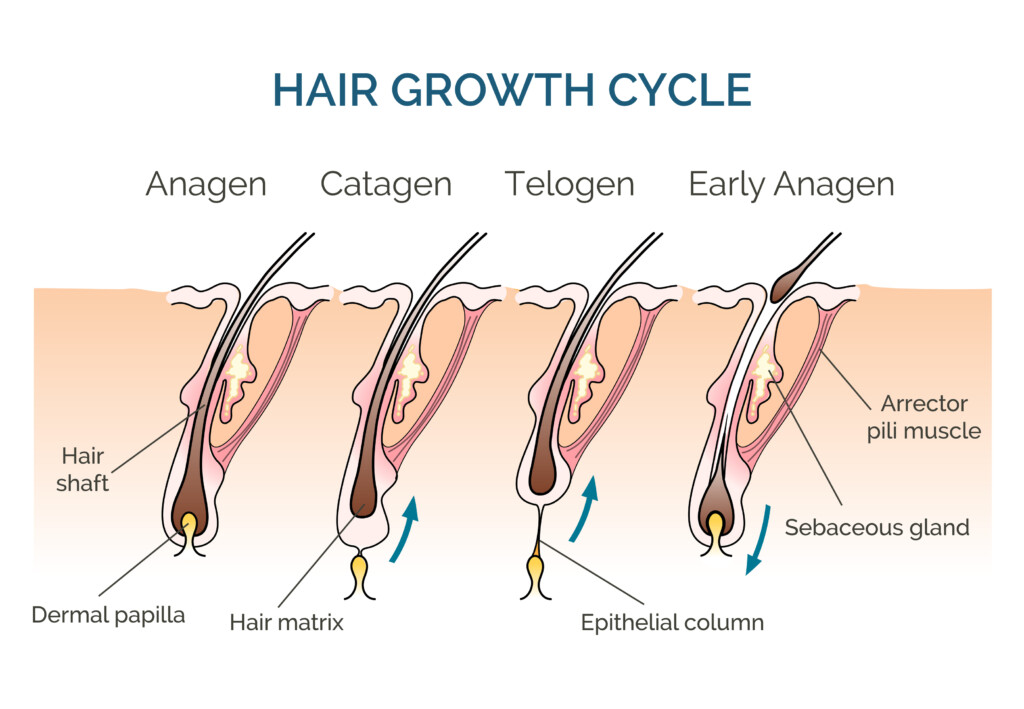
What is Postpartum Hair Loss?
Pregnancy is associated with significant changes in the levels of hormones. The estrogen levels, progesterone, androgen, and thyroid hormones increase during pregnancy. Following termination of pregnancy and/or childbirth, the removal of the placenta is accompanied by a reduction in the levels of estrogen and progesterone, along with a significant rise in the levels of the hormone prolactin. This change in hormones triggers a shift in the hair cycle.
Delayed anagen release is one of the five forms of telogen effluvium and is referred to as postpartum hair loss. In postpartum hair loss, the hair follicles stay in the anagen phase for a longer duration than normal, followed by their progression into the telogen phase. The delayed initiation of the telogen phase is accompanied by the release of hair follicles in the anagen phase, marking increased hair loss.
Check out other articles related to hair loss.
What Causes Postpartum Hair Loss?
The key mechanism underlying postpartum hair loss depends on the progression of hair follicles through different hair cycle stages. Pregnancy is characterized by prolongation of the anagen phase, reducing the amount of hair shed during pregnancy. This is the reason why women observe increased hair fullness while they are pregnant.
After childbirth, the hair cycle stages become synchronous, and the hair follicles progress through the telogen phase. Additional hair maintained in the growth or anagen phase during pregnancy enter the resting or telogen phase within 3-6 months of delivery with a sudden drop in hormone level leading to excessive shedding.
Which Scalp Regions are Involved in Postpartum Hair Loss?
Shedding of scalp hair during postpartum hair loss is usually all over the head. However, the front part of the scalp (anterior) is predominantly involved in about 60% of women.
What is the Duration of Postpartum Hair Loss?
Telogen effluvium is a reversible hair loss condition that occurs a few months after the triggering event, in this case, childbirth. However, the hair loss reverts to normal after the stress-causing factor is eliminated.
Postpartum hair loss usually begins to show between 2 to 4 months after the child’s birth. It lasts about three months and should slow down after that time. Most women would notice a significant improvement by 12 months after childbirth. However, in rare cases, postpartum hair loss can continue for up to 15 months after childbirth.
Hair Loss and Oral Contraceptives
In addition to hair loss postpartum, telogen effluvium is also associated with the consumption of oral contraceptives or birth control pills. Cessation of birth control therapy is followed by the onset of hair loss at approximately after two months.
Both postpartum hair loss and hair loss associated with discontinuation of birth control pills share a common root cause since oral contraceptives cause hormonal changes. Both of these mechanisms involve the delayed anagen release form of telogen effluvium.
How is Postpartum Hair Loss Diagnosed?
Your provider will determine if you have this condition based on your observations of increased hair loss and recent pregnancy.
How to Combat Postpartum Hair Loss?
You don’t really need to. As mentioned previously, postpartum hair loss is a self-limiting condition that resolves on its own upon removal of the stressor or triggering event, typically within 12 months of childbirth.
Patient awareness regarding postpartum hair loss and reassurance by the physician to modulate stress and anxiety also play a pivotal role in combating hair loss.
In addition, some general tips can help minimize excessive hair shedding:
- Avoiding hairstyles that put stress on hair or scalp
- Being extra gentle with hair while washing and brushing
- Use fortifying shampoos and lightweight conditioners
- Eating a healthy diet and taking prenatal vitamins to ensure that the body is getting all of the nutrients it needs
Conclusions
Postpartum hair loss is a common physiological occurrence as the pregnancy ends. This hair loss is caused by changes in hormone levels after childbirth. The hair fall is temporary and reversible and resolves in 9-12 months after childbirth.
There are no treatments for this type of hair fall. A healthy diet and taking good care of hair can reduce excessive shedding.
FAQs
Does postpartum hair loss occur in all pregnancies?
Research suggests that postpartum telogen effluvium occurs in about 40%-50% of the total women. Moreover, for the same woman, not all pregnancies are associated with postpartum hair loss. Hair loss is more prevalent in first pregnancies owing to related emotional stress during childbirth.
Does pregnancy cause permanent hair loss?
No, postpartum hair loss is temporary. The condition doesn’t generally last longer than six months and doesn’t result in permanent hair loss.
How long does it take for postpartum hair loss to grow back?
Postpartum hair loss initiates 2 to 4 months after the pregnancy ends and continues for approximately 6-24 weeks, after which women observe lesser hair fall. The hair growth cycle becomes synchronous, and the normal hair growth pattern is resumed. Most women see a significant improvement by 12 months after childbirth.
How can I prevent hair loss after pregnancy?
The hair fall after childbirth is a result of a change in hormone levels. So, not much can be done to alter the associated hair cycle changes. That said, you can take care of hair to reduce hair fall by being extra gentle while washing or styling, avoiding tight hairstyles, using volumizing shampoos, and getting the right nutrients through healthy food and vitamins.
Is postpartum hair loss related to breastfeeding?
Breastfeeding does not cause hair loss. Increased hair shedding is common postpartum and therefore may be observed during breastfeeding. However, breastfeeding is not associated with postpartum hair loss. Changing hormone levels cause the shedding.
What vitamins should I take for hair loss after pregnancy?
A good diet can help decrease postpartum hair loss. Vitamins A, C, D, E, and Biotin have been shown to be beneficial for postpartum hair loss and are great for overall hair, skin, and nail health.
How much hair do you lose postpartum?
The hormone fluctuations that happen in women who are postpartum cause more strands of hair than usual to enter the resting stage (telogen) and then fall out a few weeks later. An average person loses about 100 hairs a day, but new moms can shed as many as 300 to 400 hairs per day.
References
- https://www.ncbi.nlm.nih.gov/books/NBK430848/
- https://www.ncbi.nlm.nih.gov/books/NBK499948/
- https://pubmed.ncbi.nlm.nih.gov/23682615/
- https://www.ncbi.nlm.nih.gov/pmc/articles/PMC3884776/
- https://www.ncbi.nlm.nih.gov/pmc/articles/PMC4606321/
- https://www.ncbi.nlm.nih.gov/pmc/articles/PMC1799260/?page=1
- https://ijdvl.com/telogen-effluvium/#ref19
- https://onlinelibrary.wiley.com/doi/epdf/10.1111/j.1365-2133.1973.tb06668.x
- https://www.ncbi.nlm.nih.gov/pmc/articles/PMC6709511/
- https://pubmed.ncbi.nlm.nih.gov/11215848/




